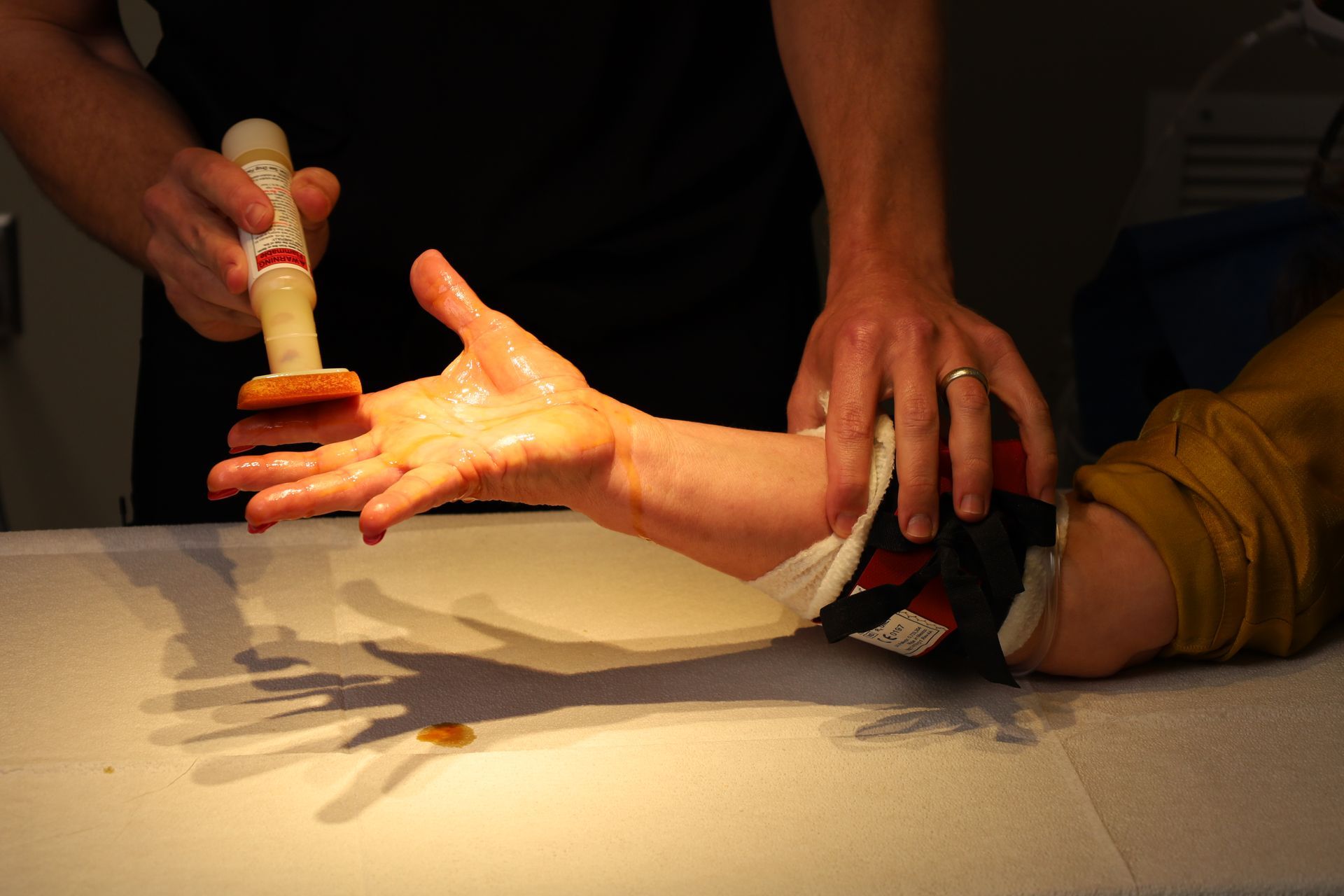Carpal Tunnel Syndrome Treatment in Baton Rouge
RELATED VIDEOS
What is Carpal Tunnel Syndrome?
There are three main nerves that run through the arm. One of these is the median nerve which runs from the shoulder to the hand, passing through a tunnel of bone and ligament at the wrist known as the carpal tunnel. This nerve gives feeling to the thumb and index, middle, and ring fingers. It also controls the muscles located at the base of the thumb. Carpal tunnel syndrome occurs when inflammation causes swelling within the carpal tunnel and compresses the median nerve.
What Causes Carpal Tunnel Syndrome?
While carpal tunnel syndrome can affect anyone, women and older adults are most likely to develop the condition. There are also several other factors which may influence one’s likelihood of developing carpal tunnel inflammation and associated symptoms. These can include:
- Repetitive hand and wrist movement
- Hand and wrist position (extended or flexed position for a prolonged period of time)
- Hereditary factors such as size of the carpal tunnel
- Pregnancy
- Health conditions like arthritis, diabetes, and thyroid imbalance
What are the Symptoms of Carpal Tunnel Syndrome?
When the median nerve becomes compressed, it can lead to some unpleasant and even painful symptoms. Among the most commonly reported symptoms of carpal tunnel syndrome are:
- Pain, numbness, and tingling in thumb or index, middle, or ring fingers. These sensations may travel all the way up the arm to the shoulder.
- Shock-like feeling that radiates down to the thumb or index, middle, or ring fingers occasionally.
- Weakness of the hand that makes fine motor movements difficult and may cause a loss in grip, resulting in dropping objects frequently
How is Carpal Tunnel Syndrome Diagnosed?
A physician can get a good idea of the presence of carpal tunnel syndrome through a thorough medical history (including work and lifestyle factors) and physical examination. This examination may include steps such as flexing the hand and wrist and pressing or tapping along the median nerve to check for numbness or tingling. Additionally, diagnostic tests such as the following may be used:
- Nerve Conduction Test – This test uses electrode patches placed along the arm to stimulate the median nerve and determine how quickly signals are traveling along it. In turn, doctors are able identify any potential areas of blockage or compression.
- X-ray – If it is suspected that you are suffering from carpal tunnel symptoms due to arthritis, injury to the ligaments, or a fracture, an x-ray can help confirm the diagnosis.
- Ultrasound – This test uses high-frequency sound waves to help check the median nerve for signs of possible compression.
Non-Surgical Treatments for Carpal Tunnel Syndrome
Treatment for carpal tunnel syndrome will depend on both the cause and severity of nerve compression. In many cases, non-surgical treatment options are sufficient to address the concern and bring relief. Commonly used treatments include:
- Nonsteroidal Anti-Inflammatory Drugs (NSAIDs) – NSAIDs can help alleviate symptoms by reducing swelling in and around the wrist that leads to nerve compression.
- Bracing / Splinting – A padded brace or splint may be prescribed to help keep the wrist straight. These braces are often worn at night, although they may also be needed during the day.
- Physical Therapy – Physical therapists may be able to institute specific, nerve-gliding exercises that can help the median nerve begin to move more easily through the carpal tunnel.
- Steroid Injections – Cortisone is a strong anti-inflammatory medication that can be injected into the carpal tunnel to help relieve inflammation and associated symptoms.
Surgical Treatments for Carpal Tunnel Syndrome
In severe cases where non-surgical treatments have failed or muscle weakness has begun to occur, surgical intervention may be needed to correct carpal tunnel syndrome. This procedure is known as carpal tunnel release and there are two potential techniques used:
- Open Release – This procedure requires an incision in the palm of the affected hand. Through this incision, the surgeon can access the wrist and split the transverse carpal ligament which serves as a roof at the top of the carpal tunnel. This opens the space and relieves pressure on the median nerve.
- Endoscopic Release – An endoscopic release serves the same purpose as an open release. However, rather than one larger incision, endoscopic release is accomplished using one or two very small incisions and a small camera for guidance and visualization.
Both open and endoscopic release are effective techniques for alleviating the pain and discomfort associated with carpal tunnel syndrome. Determining which method is best, is a decision that can be reached by each physician and patient based on individual needs.
Carpal Tunnel Specialists in Baton Rouge
RELATED READING







